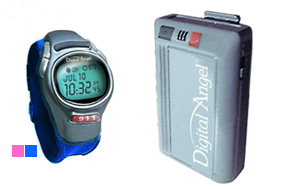|
© 2001 jukal at cyberian dot org |
|
Extreme parental supervision |
|
What do we need parents for? Let the technology mind what your children do! I have a 3-year old kid. He is fast. Very fast. We live by the lake. Sometimes you think about the worst-case scenario - what if he doesn't believe our instructions and jumps into the water. In today's shiny happy world full of technology, cant I just say where my kid can go and let the machines take care? |
So the target is to create a system which fills the following requirements with the given priority:
I see multiple technical solutions to propose for this. Let's discuss them, try to choose the best solution and discuss the chosen solution in more detail. But first, let's describe the environment and the needs in more practical way. EnvironmentOur home is in semi rural area, in a town near a bigger city. The place could be considered rather safe for children, but there are some details which may pose a risk, such as: the nearby lake, the well, the swing, a larger rock, some bushes with non eatable berries. These for example. So, if you are for example a system security specialist, you could see these as threats. What we need to do is to find the counter measures to reduce the risk posed by these threats.They key is to react before the threat activates. So for example, if the kid is approaching the lake, if he is spending too much time around those dangerous berries or is playing with the well - we need to know in time. And this is what we need our technology for. Techniques
GPS-based child monitoring - do it yourselfNow that we have chosen the best tracking technology for this task, it is time to define the rest of the playground. How do we:
 We also need some co-operation with the hardware provider to get the specifications of the system - they don't seem to be completely public at the moment. Then we go to our Linux box, connect the RF receiver using serial cable. We read the specifications of the receiver and write drivers for it. Once we are capable of communicating with the receiver we code a program which stores the position data in a database. See, we need to have access also to data from 1, 5, 10 and 30 minutes ago to compute the activity profile of the child being monitored. It also doesn't harm to store data from previous days - this can be used as a seed for fuzzy logic when analysing potential behavious profiles. Then what we need to do is to map the environment. Place the threats where they are located: the stones, the lake and other hazards - we also need to map the topology of the environment. Ok. Then comes the trickiest part. We need to write software which takes the current and previous positions of the child and analyzes whether the current actions and location of the child are acceptable. If not we need to trigger an alert based on the severity of the current actions: if the action does not pose immediate danger to life, such as the kid has been eating too many apples ( we have plenty ), we can just send an SMS short message to the parents phone. If, instead the hazard is extremely dangerous we can send a little electrical shock to the kid. So, now our software is ready and we can think if there was any sense in this at all: In my opinion there was not - it is just so easy to think about the possibilities enabled by the technologies and forget that we are human beings. << Back to Amazon Discoveries Copyright © 3/Sep/2001 Jussi Kallioniemi [ jukal at cyberian.org ] The oddities presented here (that are not copyrighted or patented by someone else, ofcourse) are released under the GNU Free Documentation License. |
|
Cyborg in ear: "nice orgy bar". "Bingo!", Ear cry. |